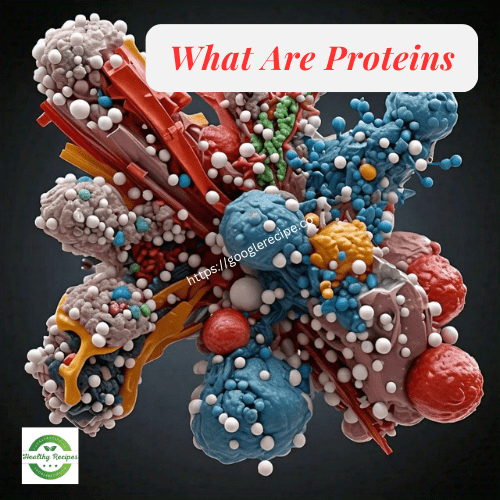Difference between protein and carbohydrates
The Crucial Function of Proteins in the Human Body: From Structure to Function
Difference between protein and carbohydrates? Proteins have many important jobs in the body. Some move nutrients around, some speed up chemical reactions, and others help build the structures of living things. Despite their different roles, all proteins are made from the same 21 building blocks called amino acids.
Amino acids are made of carbon, oxygen, nitrogen, and hydrogen, and some have sulfur. Selenocysteine is a unique amino acid that contains selenium. Each amino acid has an amino group, a carboxyl group, and a side chain attached to a central carbon atom. The side chain is the part that changes among amino acids and gives them their properties.
Hydrophilic (polar) amino acids mix
Hydrophobic amino acids have side chains rich in carbon and do not mix well with water. Hydrophilic (polar) amino acids mix well with water. Charged amino acids interact with opposite charges on other amino acids or molecules. The primary structure of a protein is its sequence of amino acids as coded by DNA.
Amino acids in a protein are linked by peptide bonds, which connect the amino group of one amino acid to the carboxyl group of another, releasing a water molecule each time a bond forms. The protein backbone is made of a chain of carbon, nitrogen, and oxygen atoms. This chain often folds into alpha helices or beta sheets.
An alpha helix is a right-handed coil stabilized by hydrogen bonds between nearby amino acids. Beta sheets form when hydrogen bonds stabilize two or more strands. The tertiary structure of a protein is its three-dimensional shape, determined by the characteristics of the amino acids.
Proteins have globular shapes
Many proteins have globular shapes with hydrophobic side chains hidden inside, away from water. Membrane-bound proteins have hydrophobic residues on the outside to interact with lipids in the membrane. Charged amino acids help proteins interact with molecules with opposite charges.
The function of many proteins depends on their three-dimensional shapes. For example, hemoglobin has a pocket to hold heme, a molecule with an iron atom that binds oxygen. Several polypeptide chains can come together to form a functional protein with multiple subunits. Hemoglobin’s four subunits work together to pick up oxygen in the lungs and release it in the body.
Proteins help us understand their structure and function
Different visual representations of proteins help us understand their structure and function. A space-filling diagram shows all the atoms in the protein. A ribbon or cartoon diagram shows the protein backbone and highlights alpha helices. A surface representation shows areas accessible to water.
The majority of proteins have sizes lower than light wavelengths. Hemoglobin, for example, is about 6.5 nanometers in size and is found in high concentrations in red blood cells, with about 280 million hemoglobin molecules per cell.
Three-dimensional shapes of proteins
The three-dimensional shapes of proteins determine their function. Antibodies have flexible arms to recognize and bind to pathogens, targeting them for destruction. Insulin is a small, stable protein that travels through the blood to regulate glucose levels.
Alpha amylase is an enzyme that begins starch digestion in saliva. The calcium pump, aided by magnesium and powered by ATP, moves calcium ions back to the sarcoplasmic reticulum after muscle contraction. Ferritin is a spherical protein that stores iron safely.
Inside, ferritin has a hollow space with atoms attached to its inner wall and stores iron in a non-toxic form. Collagen forms a strong triple helix for structural support in the body and can form elongated fibrils that aggregate into collagen fibers.
Frequently Asked Questions (FAQs)
What are proteins?
Large, intricate molecules, proteins are essential to numerous bodily functions. They are involved in transporting nutrients, speeding up chemical reactions, and building the structures of living things.
What are proteins made of?
Proteins are made up of 21 building blocks called amino acids. Each amino acid has a specific structure that includes carbon, oxygen, nitrogen, and hydrogen atoms, and sometimes sulfur.
What function do amino acids serve in proteins?
Proteins are made up of precise combinations of amino acids. The sequence and properties of the amino acids determine the protein’s structure and function.
What are hydrophobic and hydrophilic amino acids?
Hydrophobic amino acids have side chains that do not interact well with water, while hydrophilic (polar) amino acids have side chains that do.
What is the primary structure of a protein?
The linear sequence of amino acids that DNA encodes is the fundamental structure of a protein.
How are amino acids linked together in proteins?
Amino acids are linked by peptide bonds, which connect the amino group of one amino acid to the carboxyl group of another, releasing a water molecule each time a bond forms.
What are alpha helices and beta sheets?
Alpha helices are right-handed coils stabilized by hydrogen bonds between nearby amino acids. When hydrogen bonds stabilize two or more neighboring strands, beta sheets are created.
What determines the three-dimensional shape of a protein?
The three-dimensional shape, or tertiary structure, of a protein is determined by the characteristics of the amino acids making up the protein chain.
How do proteins interact with their environment?
Proteins with hydrophobic side chains tend to hide these parts inside away from water, while membrane-bound proteins have hydrophobic residues on the outside to interact with lipids in the membrane. Charged amino acids interact with oppositely charged molecules.
Why is the shape of a protein important?
A protein’s structure is essential to its functionality. For example, hemoglobin’s shape allows it to bind and transport oxygen, while antibodies have flexible arms to recognize and bind pathogens.
How can we visualize proteins?
Proteins can be visualized using different representations, such as space-filling diagrams showing all atoms, ribbon diagrams highlighting the protein backbone and alpha helices, and surface representations showing areas accessible to water.
What are some examples of protein functions?
Hemoglobin transports oxygen in the blood, insulin regulates blood glucose levels, alpha amylase starts starch digestion in saliva, and ferritin stores iron safely.
What is collagen, and what is its role?
Collagen is a protein that forms a strong triple helix for structural support in the body. It can form elongated fibrils that aggregate into collagen fibers.
Carbohydrates: The Vital Energy Source That Powers Our Systems
Our bodies use carbohydrates as their primary energy source.. Our bodies break down carbohydrates into glucose. Glucose, also known as blood sugar, provides energy for our cells, tissues, and organs like the brain, kidneys, heart, muscles, and central nervous system.
You can either consume glucose right once or store it in your muscles and liver for later use. This storage helps our bodies maintain energy levels when we don’t eat enough carbohydrates.
Carbohydrates come in many forms
Carbohydrates come in many forms, such as sugars, starches, and dietary fibers found in foods from plants. For example, fiber helps with digestion, makes you feel full, and controls blood cholesterol levels.
Not eating enough carbohydrates can lead to tiredness, weakness, difficulty focusing, constipation, bad breath, and a lack of vitamins and minerals. It can also cause weight loss or gain, gas, cavities, brain health issues, and acne.
Eating too many simple carbohydrates can lead to weight gain, diabetes, heart disease, and high cholesterol.
A balanced diet with the right amount
Eating a balanced diet with the right amount of carbohydrates is important for overall health. Carbohydrates should come from a variety of sources, including fruits, vegetables, whole grains, and legumes. These sources provide essential nutrients and help maintain energy levels throughout the day.
Avoid consuming too many sugary drinks and snacks, as these can lead to health problems. Instead, focus on complex carbohydrates, which provide long-lasting energy and are beneficial for your health.
Remember to monitor your carbohydrate intake and adjust it based on your activity level and health goals. Consult with a healthcare provider or a nutritionist for personalized advice on carbohydrate consumption.
Frequently Asked Questions (FAQs) About Carbohydrates
1. What are carbohydrates? Carbohydrates are nutrients found in foods and drinks that provide the body with energy. They include sugars, starches, and fibers.
2. Why are carbohydrates important? Carbohydrates are the body’s main source of energy. They are converted into glucose, which powers our tissues, organs, and cells.
3. What are some examples of foods high in carbohydrates? Foods high in carbohydrates include bread, rice, pasta, potatoes, fruits, vegetables, and legumes.
4. What distinguishes simple from complex carbohydrates?? Simple carbohydrates are sugars that provide quick energy but can lead to spikes in blood sugar. Complex carbohydrates, like starches and fibers, provide sustained energy and are found in whole grains, vegetables, and legumes.
5. How much carbohydrate should I eat daily? The amount of carbohydrates needed varies by individual based on age, gender, activity level, and overall health. Generally, 45-65% of your daily calorie intake should come from carbohydrates.
6. What happens if I don’t eat enough carbohydrates? Not eating enough carbohydrates can cause fatigue, weakness, difficulty concentrating, constipation, and nutrient deficiencies.
7. Can eating too many carbohydrates be harmful? Yes, consuming too many carbohydrates, especially simple sugars, can lead to weight gain, diabetes, heart disease, and high cholesterol.
8. Are all carbohydrates bad for you? No, not all carbohydrates are bad. Whole grains, fruits, vegetables, and legumes provide essential nutrients and are important for a healthy diet.
9. What is dietary fiber, and why is it important? Dietary fiber is a type of carbohydrate that aids digestion, helps you feel full, and controls blood cholesterol levels. It is found in plant-based foods like fruits, vegetables, and whole grains.
10. How can I make healthier carbohydrate choices? Choose whole grains over refined grains, eat plenty of fruits and vegetables, and limit sugary snacks and drinks. Focus on a balanced diet with a variety of nutrient-rich foods.


